Magnetic Field
A magnetic field is the area around a magnet where its force can be felt. It is a region in which magnetic materials and moving electric charges experience a force due to their magnetic properties. The magnetic field is an invisible force that is responsible for the magnetic attraction and repulsion between objects.
Key Concepts to Understand:
- Magnetic Poles: Every magnet has two poles - a north pole and a south pole. Like poles repel each other, and opposite poles attract each other.
- Magnetic Field Lines: Magnetic field lines show the direction in which a north pole would move if placed in the field. The lines always form closed loops and are closer together where the field is stronger.
- Earth's Magnetic Field: The Earth acts like a giant bar magnet, with a north magnetic pole and a south magnetic pole. This is why a compass needle points towards the Earth's North Pole.
- Electromagnets: When electric current flows through a wire, it creates a magnetic field around the wire. Coiling the wire into a loop or wrapping it around an iron core can strengthen the magnetic field, creating an electromagnet.
Study Guide:
When studying the magnetic field, it's important to understand the following:
- What is a magnetic field and how is it created?
- How do magnetic poles interact with each other?
- What are magnetic field lines and how are they used to represent the magnetic field?
- What is the significance of Earth's magnetic field?
- How can an electromagnet be created and what are its applications?
Understanding these concepts will provide a strong foundation for comprehending the behavior and effects of magnetic fields.
Remember to perform hands-on experiments, such as using iron filings to visualize magnetic field lines or building simple electromagnets, to reinforce the concepts learned.
Good luck with your studies!
.◂Science Worksheets and Study Guides Third Grade. Hands-on Lab Skills/Science Inquiry - 3rd grade
Study Guide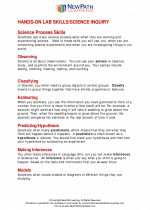 Hands-on Lab Skills/Science Inquiry - 3rd grade
Hands-on Lab Skills/Science Inquiry - 3rd grade  Worksheet/Answer key
Worksheet/Answer key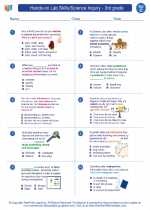 Hands-on Lab Skills/Science Inquiry - 3rd grade
Hands-on Lab Skills/Science Inquiry - 3rd grade  Worksheet/Answer key
Worksheet/Answer key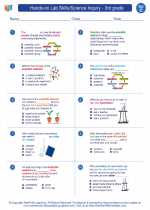 Hands-on Lab Skills/Science Inquiry - 3rd grade
Hands-on Lab Skills/Science Inquiry - 3rd grade  Worksheet/Answer key
Worksheet/Answer key Hands-on Lab Skills/Science Inquiry - 3rd grade
Hands-on Lab Skills/Science Inquiry - 3rd grade  Worksheet/Answer key
Worksheet/Answer key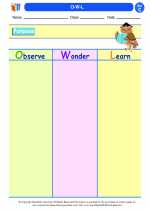 O-W-L
O-W-L  Vocabulary/Answer key
Vocabulary/Answer key Hands-on Lab Skills/Science Inquiry - 3rd grade
Hands-on Lab Skills/Science Inquiry - 3rd grade  Vocabulary/Answer key
Vocabulary/Answer key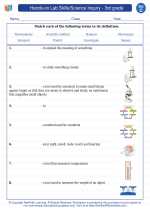 Hands-on Lab Skills/Science Inquiry - 3rd grade
Hands-on Lab Skills/Science Inquiry - 3rd grade 

 Worksheet/Answer key
Worksheet/Answer key
 Worksheet/Answer key
Worksheet/Answer key
 Worksheet/Answer key
Worksheet/Answer key
 Worksheet/Answer key
Worksheet/Answer key
 Vocabulary/Answer key
Vocabulary/Answer key
 Vocabulary/Answer key
Vocabulary/Answer key

The resources above cover the following skills:
Science as Inquiry and Process: A student should understand and be able to apply the processes and applications of scientific inquiry. A student who meets the content standard should:
Develop an understanding of the processes of science used to investigate problems, design and conduct repeatable scientific investigations, and defend scientific arguments.